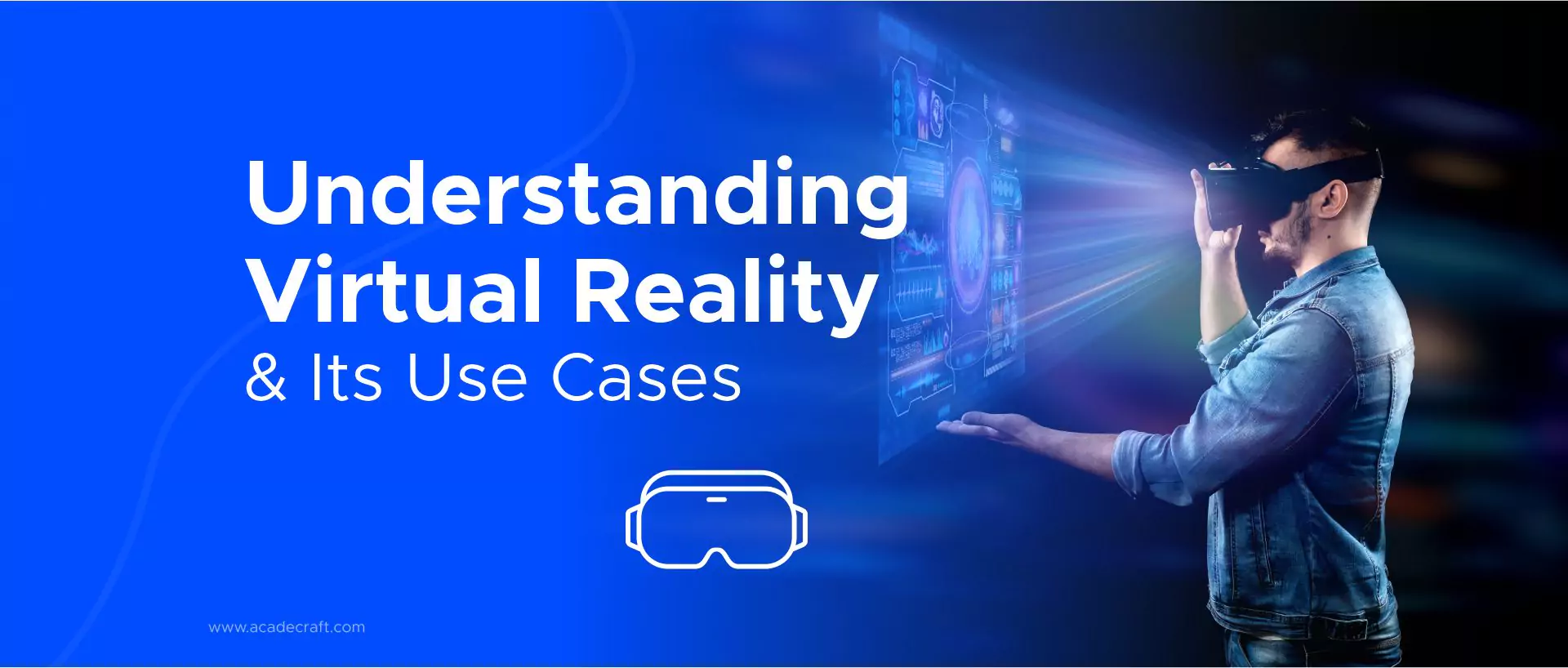
Virtual Reality is an immersive technology that imitates realistic experiences by creating interactive digital environments. Its roots trace back to the 1960s, with contemporary it encompassing a spectrum of experiences from gaming and entertainment to education and healthcare. Today, It stands as a significant driver of innovation and engagement. This comprehensive article offers insights into what virtual reality is, its mechanics, applications, challenges, and prospects.
At its core, It aims to replicate the sensation of being present in a different place or Reality. Its headsets are designed to cover a user's field of vision with high-resolution displays, creating a sense of depth and immersion. These headsets can also incorporate sensors that track head movement, allowing the virtual environment to respond to the user's perspective in real time. Additionally, spatial audio techniques enhance the immersion by providing a 3D soundscape that changes as users move within the virtual space.
In today's world, Virtual Reality holds significant importance across various industries:
It delivers a safe and steady environment for medicine, aviation, and military training. It allows learners to practice complex tasks without real-world consequences.
The benefits of Virtual Reality are that it is used for pain management, exposure therapy for phobias, and physical rehabilitation, showcasing its potential to improve well-being.
Architects and designers use VR to create and experience 3D models of buildings and spaces, providing a more accurate sense of scale and aesthetics.
Aiming to create a digital and realistic environment that customers can interact with and experience as if it were real, virtual Reality (VR) is a technology. To generate this experience, specific hardware and software are frequently used. Here is an overview of how virtual Reality works:
Hardware foundation comprises headsets and head-mounted displays (HMDs) with screens and lenses that immerse users in virtual worlds. Controllers and input devices facilitate user interactions, while sensors and tracking systems capture real-time movements, allowing users to guide and interact within these digital domains.
Content creation involves virtual instructor-led training content provider 3D modelling and animation to build lifelike virtual environments. Its development platforms provide tools and frameworks for creators to design interactive experiences. Immersive audio integration further enhances realism by enveloping users in a multidimensional soundscape.
Virtual Reality technology can be categorized into different types based on the level of immersion and interaction they offer. These types include:
Fully immersive service provides users with a deeply engaging experience where they feel completely transported to a virtual environment. This type of VR typically involves high-quality VR that covers the user's field of vision, creating a sense of being surrounded by the virtual world.
Non-immersive Virtual Reality, also known as desktop or windowed, offers a VR-like experience without the complete sense of immersion provided by fully immersive.
Semi-immersive Virtual Reality falls between fully immersive and non-immersive in terms of immersion and interaction. It provides a moderate level of immersion while not requiring the same hardware complexity as fully immersive.
Read Also: 5 Ways Immersive Technology Transform Education
Virtual Reality service providers rely on a combination of sophisticated technologies to create immersive and engaging experiences. Here are some key technologies that play a pivotal role:
High-resolution displays and advanced optics are pivotal in delivering realistic visual experiences.
Infrared sensors and cameras track users' movements, translating them into corresponding actions within the virtual space.
Haptic devices provide tactile feedback, enabling users to "feel" virtual objects and textures.
Immersive audio systems create a 3D auditory environment, heightening the sense of presence.
It has various applications across various industries, revolutionizing how we experience, learn, train, and interact with the world. Here are some notable use cases for VR technology:
Read Also: Benefits of Using AR & VR Technology in E-Learning Solutions.
Here's an overview of the challenges and limitations associated with virtual Reality:
Extended sessions can induce motion sickness and discomfort in some users.
High-quality experiences often require costly hardware, limiting accessibility.
It raises ethical concerns regarding the blurring of real and virtual worlds, impacting psychological and emotional well-being.
The lack of standardized content creation and hardware specifications challenges the industry's growth.
Advancements in hardware are a key driving force behind virtual Reality's evolution, including improvements in headsets, controllers, and related accessories. As technology progresses, we can expect hardware to become more compact, comfortable, and capable of providing higher resolutions, wider fields of view, and more realistic sensory experiences. Enhanced hardware can lead to more immersive and engaging experiences.
The integration of artificial intelligence (AI) with virtual Reality holds the potential to enhance user experiences significantly. AI can create more responsive and dynamic virtual environments by adapting to user behaviour and preferences. It can also generate realistic NPCs (non-player characters) and enhance natural interactions. AI algorithms help predict user actions and provide real-time feedback to create more personalized and interactive scenarios.
Social Virtual Reality platforms allow users to interact with others in virtual spaces, enabling shared experiences even when physically distant. As these platforms continue to develop, we expect to see more sophisticated avatars, interactive environments, and tools for collaboration and communication. Virtual meetings, conferences, and events could become more common, blurring the lines between physical and virtual interactions.
The integration with the real world has various applications, including training simulations for various industries (e.g., medical, military, aviation), architectural visualization, virtual tourism, and more. Combining real-world data with Virtual Reality can lead to enhanced training experiences, better decision-making, and novel ways of interacting with our environment.
As we have seen, What is Virtual Reality? It has grown beyond its original purpose and has become embedded in every aspect of our lives. The unparalleled potential to change industries, educate, entertain, and connect people. Exploring and creating within technology offers a future where the distinction between the real and the virtual becomes increasingly hazy, providing unusual chances for human experiences.
Share